Data You Can Use:
The Charlotte-Mecklenburg Quality of Life Explorer
Katie Zager
Research Associate
UNC Charlotte Urban Institute
Mary Ann Priester
Senior Management Analyst
Mecklenburg County Community Support Services
Are homes in your neighborhood getting bigger or smaller? Are residents in a specific community able to access essential services, such as grocery stores, or public transportation? Where should our community building efforts be focused? The Charlotte-Mecklenburg Quality of Life Explorer can help answer these questions and many more.
This blog provides a brief overview of the Charlotte-Mecklenburg Quality of Life Explorer and how it can be used to better understand various housing dimensions at the Neighborhood Profile Area level.
QUALITY OF LIFE EXPLORER
The Quality of Life Explorer (Explorer) is an online dashboard that contains information on over 400 neighborhoods in Charlotte and, in some cases, has data going back nearly a decade. There are over 80 different variables on the Explorer, including basic demographic information, such as population, educational attainment, and median household income. It also contains information about things like recycling participation, calls to 311, or housing code violations that are gathered from local administrative data sets.
The data are organized into nine dimensions: Character, Economy, Education, Engagement, Environment, Health, Housing, Safety and Transportation.
HOUSING DIMENSION
The housing dimension contains information that might be of particular interest to those who read this blog. There is information on home ownership, median rent and occupancy rate, but, more importantly, the local data allows us to track change over time.
Home sales price: Did you know that the average home sale price in Mecklenburg County increased from $267,916 in 2013 to $490,212 in 2023? In some neighborhoods, home sales increased by over 600%.
Residential new construction: Did you know that since 2015, Mecklenburg County has been adding over 10,000 new residential units (both single and multi-family) a year? This is compared to just 3,418 units that were added in 2011, during the Great Recession.
Residential Foreclosures: With increasing home values, and a stronger economy, the number of residential foreclosures in Mecklenburg County has plummeted, from 1,000s of units in 2015-2016, to just 59 in 2023.
Other variables include housing density, housing age, residential renovation and demolition permits, average housing age and size, single family rentals, single family units, housing code violations, and affordable housing. The number of affordable housing units only includes those where the developer is receiving tax credits or other government support in return for providing income-restricted housing units.
USING THE DATA
The basic layout of the Explorer contains a map, with values for all 462 neighborhoods, which we call Neighborhood Profile Areas (NPAs). You can find an NPA of interest by searching for an address in the search bar or clicking it on the map. Once you click on an NPA, it will be highlighted on the map in pink, and you can compare the value for that NPA to the rest of the county.
In the image above, we have selected NPA 476, which encompasses the four wards of Uptown. Average Home Sales price in 2023 was slightly below the county average in these neighborhoods. Clicking on more than one NPA allows you to compare the value in the entire selected area to the county. You can look at things like city council districts, parts of town such as “East Charlotte” or corridors, such as neighborhoods along Beatties Ford Road. The time slider below the map allows you to change the year of the data you would like to view, while the line graph to the right of the map allows you to look at how the values have changed over time.
Although not captured above, the Explorer also contains buttons you can use to navigate to different pages, and below the map, you’ll find more in-depth information about the data. You can also download the data for use in your own research or project.
SO WHY DOES THIS MATTER?
The Quality of Life Explorer is unique in that it allows us to look at data across both space and time. It can be used to focus on one neighborhood and explore what has happened there over the last decade, or to look for patterns and compare characteristics and values between different neighborhoods. The Explorer can be a powerful tool for determining where and how to allocate resources, determine need for programs and services, evaluate and justify need, or can simply provide a better understanding of what is going on in the community. The Explorer makes data accessible and actionable and provides an important resource that should be used to make data driven and informed decisions to address homelessness and housing in Mecklenburg County.
The Charlotte-Mecklenburg Quality of Life Explorer is the result of a partnership between the UNC Charlotte Urban Institute, the City of Charlotte, and Mecklenburg County. The Explorer can be found online at www.mcmap.org/qol
Katie Zager is a Research Associate at the UNC Charlotte Urban Institute.



